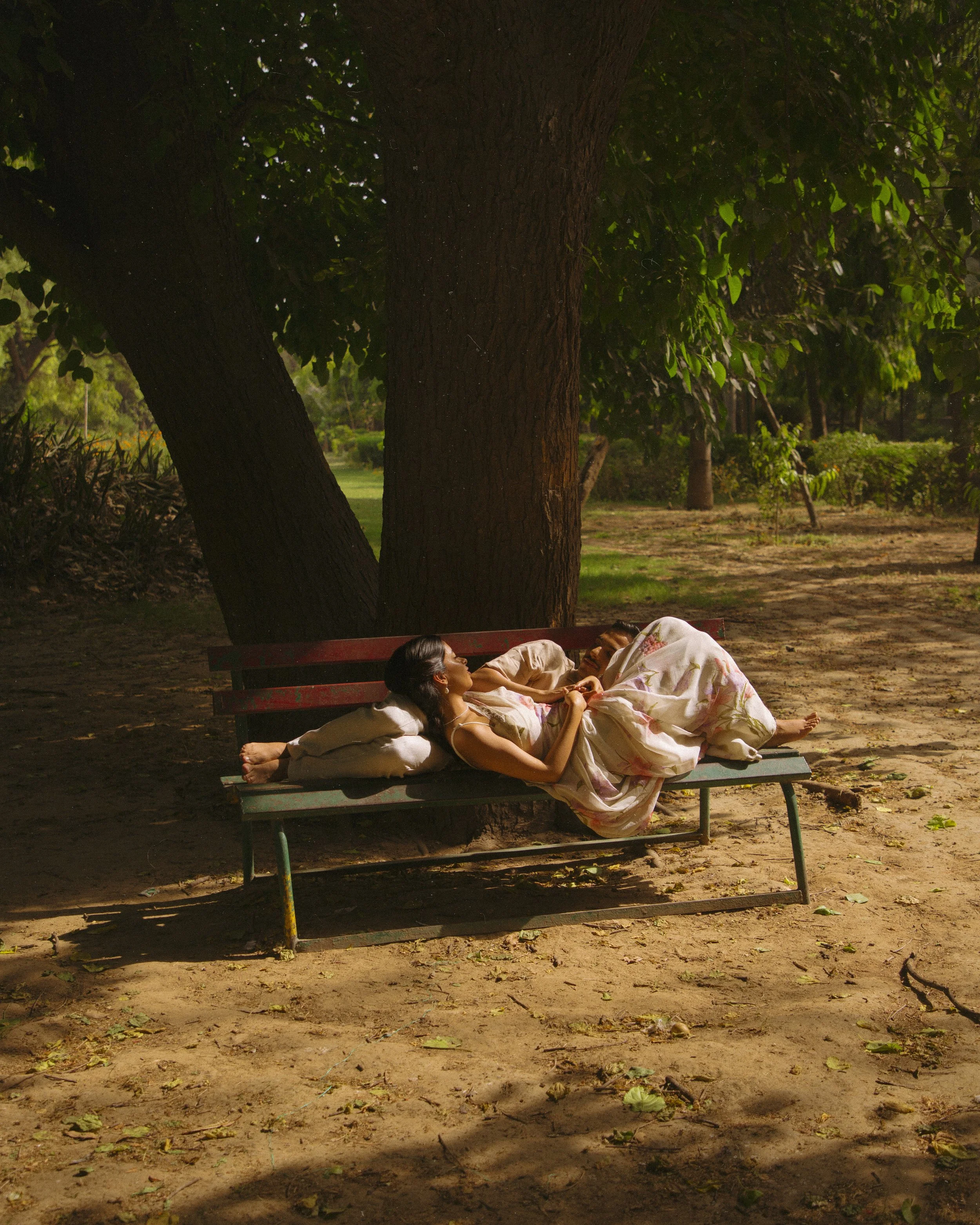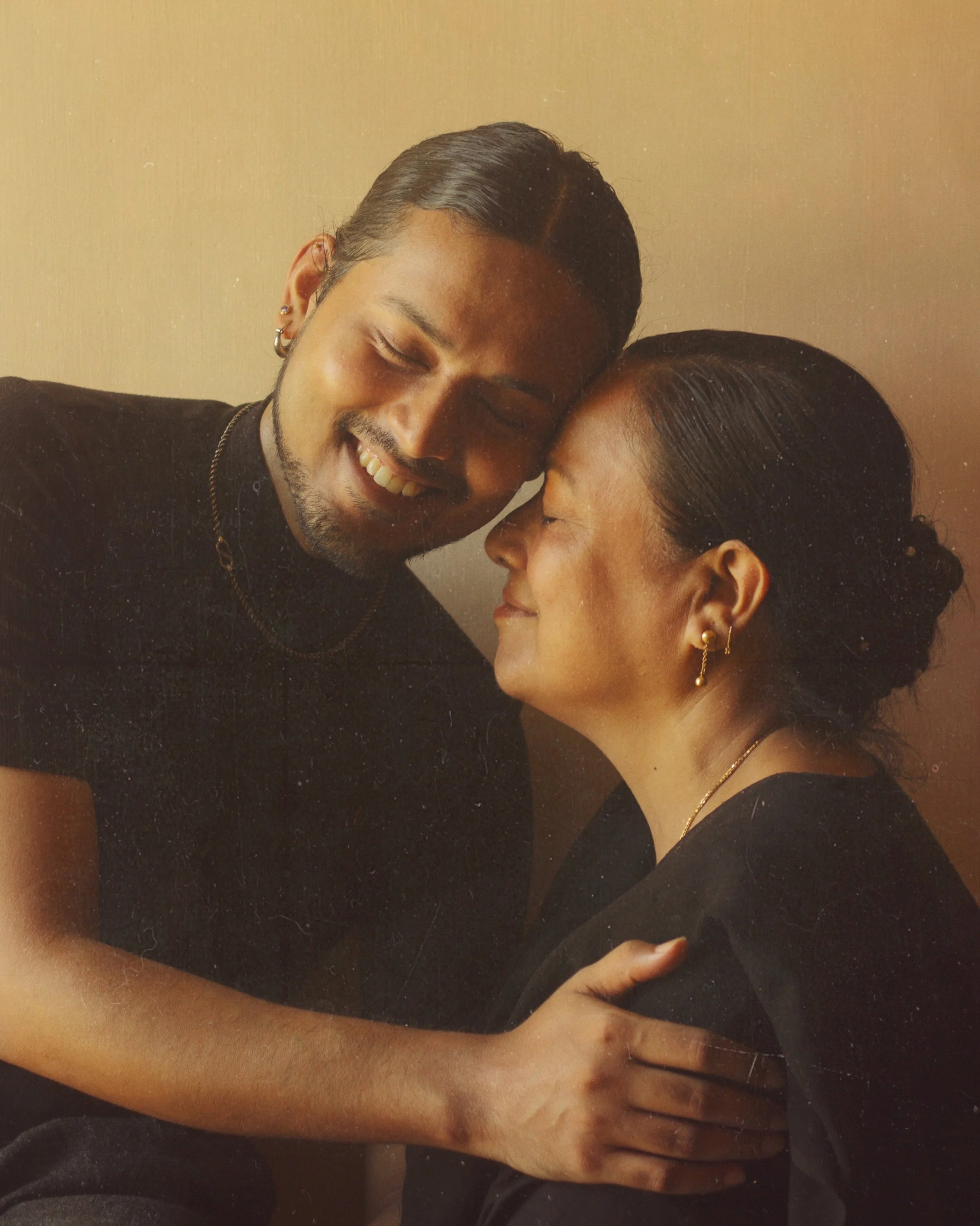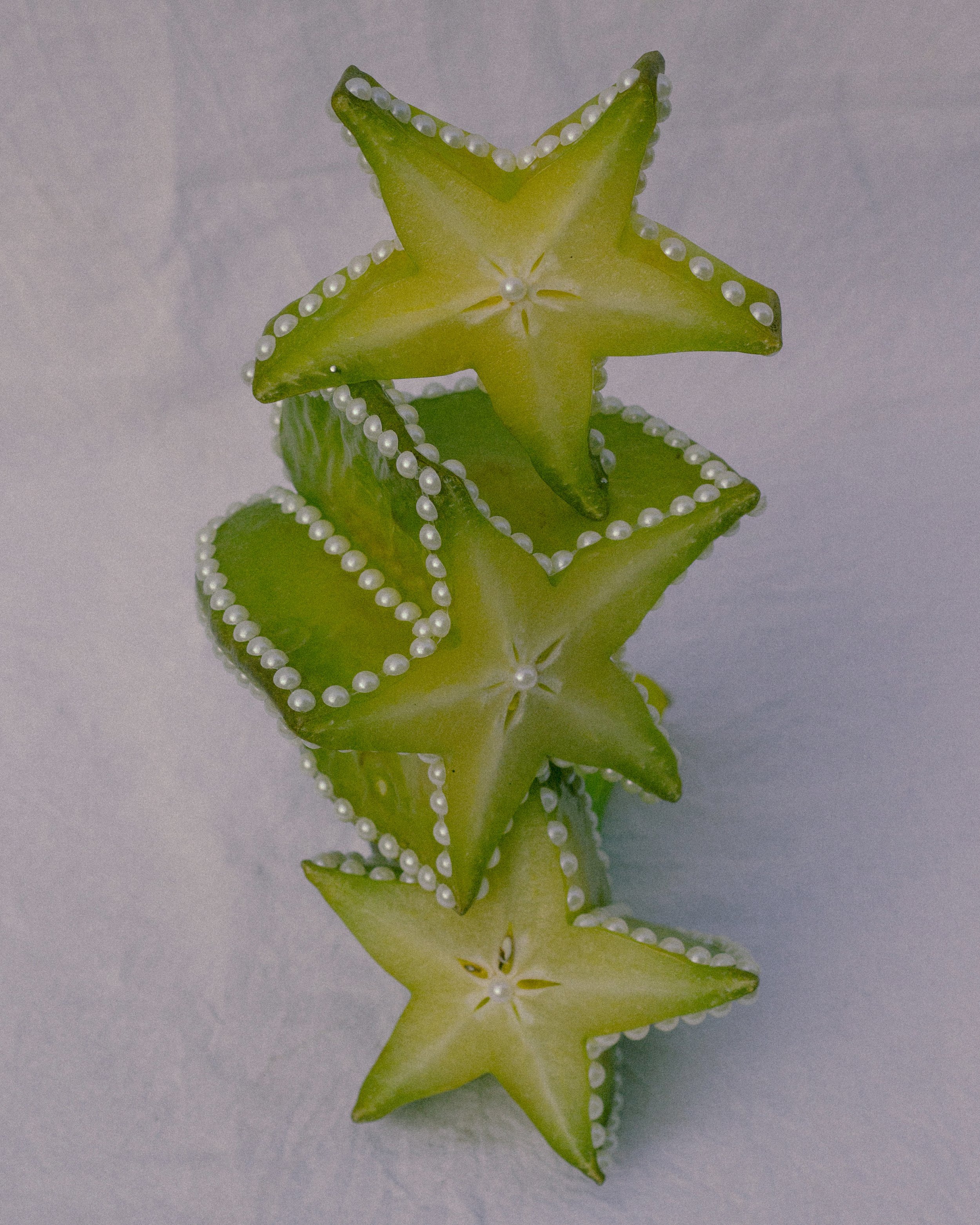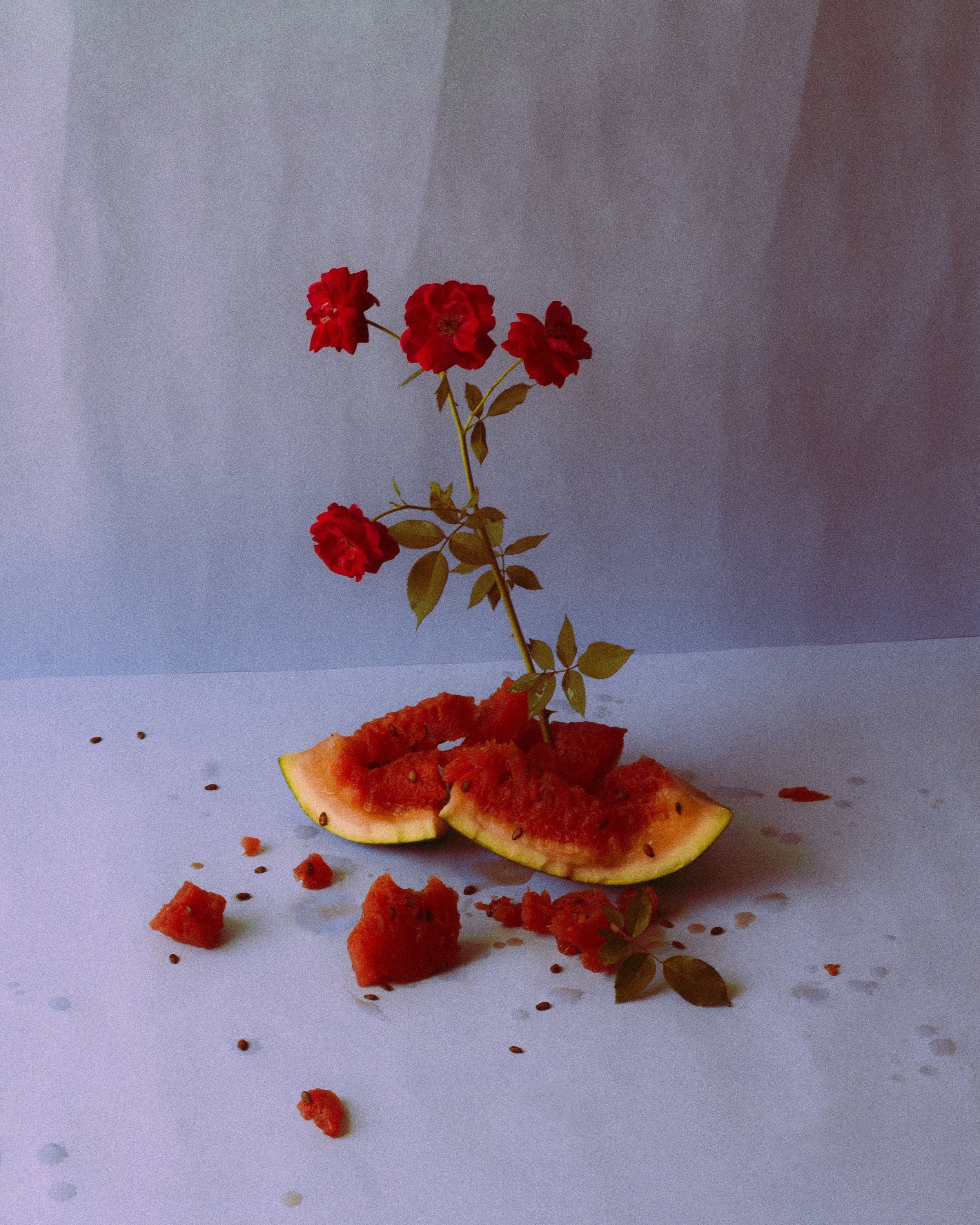Imdad Barbhuyan
Imdad Barbhuyan is a Visual Artist living in Delhi
Imdad Barbhuyan (he/they) is a self-taught visual artist based out of Delhi. Born and raised in Assam, he came to Delhi in 2013 to train in architecture but started dabbling in photography during his studies. After graduating and considering many things, Imdad joined an Ayurvedic skincare brand called Kama Ayurveda as their image designer. However, he quickly realised he didn’t have the time to work on personal projects, so one year later, in February of 2020, Imdad quit and went home in need of a break. He ended up staying there for some time as COVID hit. But honestly, it was the best way for Imdad to start his photography journey.
He was home with his mother, spending time in the garden, cooking, eating wholesome food and living a stress-free life. It was back in Assam that Imdad got his first commission work for magazines and other brands. It was when he finally thought: “I can do this”.
Tell me a bit about your upbringing. Were you raised in an artistic household?
My father is a civil engineer and my mother a stenographer, so far from it, really. I often think that if I had been born in Delhi, my life would have turned out very different. But because I was born in Assam, which is in the northeast of India and geographically quite cut off from the mainland, I was much closer to nature and identified more with other countries and cultures like China, Bangladesh, Vietnam or the Philippines. Things I can visualise from my childhood, just off the top of my head: banana leaves, mud, hibiscus, lotuses, rain. When it rains, the whole road looks like melted chocolate. When we went to school, the bus wouldn’t come right to our house, so we had to carry our shoes in our hands and just walk this stretch in mud
My window to the external world was Fashion TV. It was my favourite channel, and I used to obsessively watch it. Initially, my parents found it questionable because they didn’t understand what I found so fascinating about women dressed so scantily. But there was this segment called ‘Backstage’, where they would ask the designers about their latest collection, and their answers were so bizarre to me then - they would say things like: “I remember my trip to the South of France and the smell of lavender, which inspired me to create this clothing line (always in an accent)”. I remember thinking: “wow, how can a smell make someone design clothes?” This realisation allowed me to see a different dimension to life, where you can feel inspired by a smell or a colour and then dedicate a segment of your life just to that. Honouring something almost so mundane made me feel emotional. I never imagined I'd be making art for a living one day. I never quite knew how to nurture that glimmer of light, that flicker inside me. I didn't find that nurturing force in my external surroundings but I found it in art, in films and books, which helped me grow and work towards my dreams.
Why do you identify as a visual artist rather than a photographer?
It’s mostly because of the artistic practice that lies in curation and in the processes that I have to tap into when thinking of a concept inspired by a feeling or a state of mind. I didn’t want to discount the power and importance of all the work that goes into expressing something visually by making images. I don't like the camera to start with; I find my phone very convenient. You can imagine, if I was a photographer who was obsessed with gear, skill, resolution and such, then I wouldn't be compromising on that regard. I also rarely share just one standalone image; it’s always a series because I'm trying to say something that is beyond the singularity of an image. I work more like a film director, so even when I’m photographing a still life, there’s a beginning and an end to the story that the series is narrating. The composition is a song in itself.
I actually cast models for my shoots via scouting on social media, Bumble or Tinder. I do this especially because I have mostly female friends, and sometimes I need male models to photograph as well. What’s most important to me is to work with interesting and unique individuals, who have something to say and something to offer, and have their own imaginary worlds. I want to plug into that and become a part of their world. Whenever we match, I instantly tell them that I would love to photograph them someday. Sometimes, if I need to test the chemistry between two individuals, I’ll invite them both over and see how they interact. I feel that if I don’t do this, it won’t be organic or believable when I shoot. I recently did this series of a couple in a park - it was so sweet because the chemistry between them was so natural. I did direct them, of course, but it flowed so wonderfully.
I'd love to hear more about the different themes that you explore in your work - melancholia, memory, desire and intimacy.
If you ask me why I take pictures, I’d tell you that I’m just a human being who feels a lot and very deeply. I’ve found that photography is the most convenient medium to express my emotions. I experience periods of loneliness because although friendship is great, I do crave a romantic presence in my life which I currently don’t have. That desire for intimacy, but also this desire for me to be a part of nature, is very much intertwined with my emotional side. You see, I live in Delhi, and I miss nature every day. When I’m home in Assam, I’m just happy - my hair is happy, my skin is happy, it’s my happy place, with all the water bodies and forests. But I have to be in Delhi for the opportunities that are here and my muses who live here. So, this feeling that I constantly have of not being at home is something that’s very much explored in my work too. You can see that when I take objects and place them out of context, sometimes it’ll look like they don’t belong, which is exactly the point I’m trying to make. I think of intimacy not only as the kind I’m lacking but also the different kinds of intimacy between humans. I did a lovely series of my mother and I, probably my favourite series yet, which resonated with a lot of people. This series was created during covid for Verve Magazine; it’s very pure and special to me. I want to continue the series and turn it into a book.
This journey of being an artist - making art and being by yourself, with your thoughts, and making something out of nothing, it’s quite a lonely experience. Through photography, I'm trying to connect with people. When someone comments or sends me a message, sharing their personal stories and how my work resonates with them, I feel like I've done my job. That makes me feel seen and is also a reassurance that I'm not alone. Nowadays, especially through social media, we all feel like we know each other. But when someone says: “I like your work, it's very aesthetic”, what do they even mean? There's so much happening, everything is so fast-paced; when even a slight connection between strangers occurs, I feel touched and grateful.
How has your ethnic background and space of residency allowed you to contemplate the harmony but also the stark differences between the natural world and human existence?
I want to live somewhere where I can watch the sun set into the water every day. We think of ourselves as separate from nature, but through my work, I am trying to remind people that we are such an inherent part of it. When I say this, I imagine hands touching mud, dipped in water or caressing the bark of a tree. It's the contrast between Assam and Delhi itself which highlights this disjunct and lack of harmony between us and nature. When I travel in Assam to the temples and the rivers, I see women bathing and people washing their clothes - I see how people are living in harmony with nature, but in Delhi, you’d never see something like this. I shot a series titled ‘Imagining a New World’ for Architectural Digest India, where I photographed flowers against the architecture of Delhi; the flowers grew out of the cracks of historic ruins or a zebra crossing. The series was about really observing nature in that manner, of how it pushes through the city. Delhi does have gardens, Lodhi Garden being the most known, but it’s a curated landscape. My personal favourite is Sunder Nursery, which has relatively untamed and wilder pockets; it’s my second home. I just go there to lie down and sit, take pictures, write or spend time talking with friends.
I’ve noticed the gems or pearls that you add to fruits/vegetables, tell me a bit about that.
When I add pearls to fruits or vegetables, I’m trying to elevate something that is seen as ordinary. I’m trying to say: if you simply look at something ordinary in a special way, that thing becomes special. If you look with love, everything is beautiful.
I sense a certain kind of dreaminess in your work. Tell me about your passion for imagination and curating dreamlike spaces.
I’ve been staring at this glass of water in front of me. It’s distracting. The light from my window is coming through it, and it’s so beautiful. I just want to photograph this glass of water, but I still haven’t done it because I, too, second guess myself sometimes. I think: “will it be a good enough image?” and “how will it be received on Instagram?” But that hasn’t stopped me from doing anything yet, and now that we are talking about it, I will surely photograph this. But to answer your question, some might find a photo like this dreamy. For me, I’m not consciously trying to make anything appear a certain way since my motivations are not aesthetic but more instinctual. I am making an image to perhaps share some feelings of mine, and how that image looks could just be an outcome of how I see things, my references and aesthetic sensibilities. But it’s funny that you say this because I hear this a lot.
I think that as children, we're all artists. Each of us has a really imaginative mind. And from what I'm hearing, you, as an adult, still tap into that, which is really special because a lot of people are scared to embrace that ‘childlike’ energy. I think that's inherently a bit dreamy because it's so imaginative. And that really beautifully comes through in your work, which is probably why a lot of people feel that dream-like sensation when they engage with your concepts.
I think you've put that really nicely. It’s that curiosity and sense of fantasy. Even a glass of water with the light shining through is seductive to me. It’s allowing yourself to be fascinated by the simplicity of the world.
What moves you? Where does your inspiration come from?
Right now, my inspiration is coming from seasonal things. I’ll go out and see cherries being sold at the market, and I’ll feel so drawn to them. I then start obsessively thinking - cherries, cherries, cherries, what can I do with them? I’ve always been fascinated by fruits, flowers and colours. And travelling really inspires me too. It’s a nice way to just break your normal routine and step into a different realm. I recently went to Banaras and found myself just observing, not projecting or conceptualising so much. Because when I’m in my own space, I tend to project my imagination and my fantasy onto everything, like with this glass of water. So in Banaras, I was in awe of everything around me.
Has your art provided a sense of community for you?
I do not dream of anything extravagant. I do not dream of fame or excessive money. But I do want to connect with like-minded people, people who like my work and I like theirs. I crave a dialogue, a mutual connection, where we can meet, collaborate and grow together. As creatives, that sense of loneliness is so profound. I have so many wonderful friends, but I can't always talk to them about my obsession with beauty, for example, or how I feel a pain in my chest when I see a certain colour. Sadly, I don't have that kind of a community here in India, and that makes me very sad. What keeps me going is this dream to be surrounded by people who are living for the sake of art. I love wild and crazy self-expression. I don't judge anyone, if someone is doing something because they love it, then I love it, and I’m happy for them. And I pray that people feel the same about me. That is success in my eyes, doing what brings you joy and connecting on a heart-to-heart level.
What are your hopes for the future?
One of my biggest goals, which is why I create and share my art, is to build a community. I would be so happy if that happened. I want to travel a lot, see new places, meet new people and make art. Make images with dancers and work with singers and actors that I admire. I also want to make books, so people can have my art in their homes. I recently began selling prints, and it’s so great to have something tangible come out of my work. I’m playing with all these very real-life elements, and when I'm flattening and compressing everything, and just feeding it all into this Instagram feed, this one app, I think: “oh my god, what has life come to?” In a strange way, going to the print shop and knowing my prints are physically hanging on someone’s wall is my way of rebelling against the digital world. But really, I just want to be able to photograph oranges and apples in bed. If I can continue this until I die, then I know I’ve lived a happy life.
Photos: Imdad Barbhuyan
Photos of Imdad: Kira Issar
Words: Naomi Joshi







